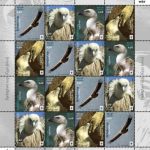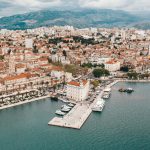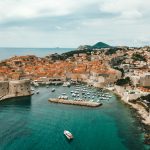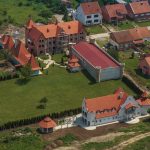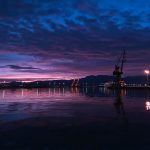As Morski writes on the 17th of September, 2019, do you know which one of Croatia’s beaches has been the most popular this year, and is the most frequently posted on Instagram? Among numerous stunning examples along the beautiful Croatian coast, one beach stood out significantly from the rest – Punta rata beach in Brela, the home of the famous Brela Rock (Kamen Brela).
Lifestyle portals reported that this magnificent Croatian beach was one of the most beautiful pebble beaches in the entire world, and that the unusual rock known as Brela Rock, located on its west side, occupied Instagram’s feed during the summer months and became one of the most famous “postcards” in the whole world.
The fascinating Brela Rock, also known as the Šakan rock, and the sheer beauty of the beach next to it have been known to the world for a long time now. Way back in July 2004, the prestigious Forbes magazine ranked it among the ten most beautiful beaches on the planet, more precisely, it ranked sixth, along side beaches like the famous Copacabana, St. Tropez, Costa del Sol, and exotic beaches in the Maldives.
Punta rata beach, the home of Brela Rock, also received praise France’s Vogue, then back in 2014, the American portal The Huffington Post declared Brela a dream destination and a reason to hop on a plane to Croatia as soon as possible.
However, the passage of time and the roots of the trees continue to take their toll on this famous Brela Rock. Punta rata beach is located in a protected area, a cape covered with dense pine forests, and the name Šakan was used until the early twentieth century due to the fact that it was the natural habitat of the Mediterranean bear, which is extremely rare and sadly almost totally extinct today. This species is often referred to by various mythical names, including Šakan.
”The stone most probably broke away from the cliffs that towered over Brela. Exactly how many years ago, or centuries ago it was, I honestly don’t know, but I do know that the rock and Punta rata beach exist in all the photographs of the past hundred years that we have in the archive of our Tourist Board. Certainly, the rock had already broken off and fallen into the sea before, where it has remained to this day,” says the longtime director of the municipal tourist board, Valentina Medić Vitković, for Slobodna Dalmacija, adding that there have always been pines growing from Brela Rock.
”A year ago, we did a study through which we learned that Brela Rock is actually a breccia (type of rock), and has a kind of closed micro world of its own, from which the pines feed. It has coped with rain, storms, ice and snow and everything else that has plagued it for at least a hundred years,” says the director for Slobodna Dalmacija, who wanted to know more about Brela Rock through the studies, as well as the best ways to preserve it and its vegetation for future generations.
Unfortunately, cracks have been able to be seen on the rock for several decades now. It has never broken, but the roots of pine trees are slowly but surely destroying and breaking it.
That is why it was important to find out the opinions of experts on the best methods to try to further preserve Brela Rock. The symbol of Brela is mostly untouched by man, with experts always preferring to let nature do its thing, and only once did they sprinkle it with earth to feed the pines, which proved to be ineffective entirely.
Therefore, it is now up to the Tourist Board and the Municipality to decide whether to interfere with nature in the near future, or just to leave the symbol of Brela as it is, and allow nature to take whatever course is natural for this remarkable structure.
A competent department from Split has stated that the breccia stone in Brela is unique on the Croatian coast, primarily because of the highly developed stage of the vegetation on its surface. It is largely covered with woody plants, hemicryptophytes and hazmophytes, which are rarely seen on the littoral part of the Croatian coast.
The stronghold for the development of these life forms lies in the structure of the breccia, unlike the typical limestone rocks, which at the contact zone of the sea and land allow only short-lived plants to grow. This boulder is an island with no coastal area, it bears eleven species of plants.
The control of the two adult pine trees on Brela Rock revealed that the older one is now in the terminal phase of its growth and that it is possible to prolong its life by engaging in arboriculture, while the other should be kept alive as long as possible in the middle stage of its development.
Make sure to follow our dedicated lifestyle page for much more.


